Pope Francis: Gospel is passed on through one’s mother tongue
Speech at General Audience
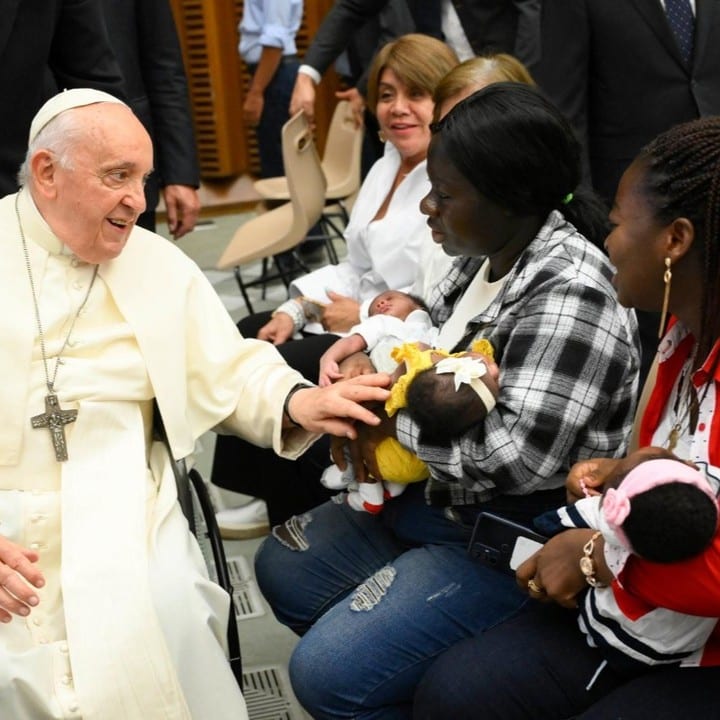
This morning’s general audience was held at 9.00 a.m. in Paul VI Hall.
In his address, the Pope, returning to the cycle of catecheses Passion for evangelization: the apostolic zeal of the believer, focused his meditation on the theme “Proclamation in the mother tongue: Saint Juan Diego, messenger of the Virgin of Guadalupe” (Reading: Mt 11:25-27).
After summarizing his catechesis in the various languages, the Holy Father addressed particular expressions of greeting to the faithful present.
The General Audience concluded by reciting the Pater Noster and the Apostolic Blessing.
Catechesis. The passion for evangelization: the apostolic zeal of the believer. 18. The proclamation [of the Gospel] in the mother tongue: St Juan Diego, messenger of the Blessed Virgin Mary
Holy Father’s Catechesis
Dear brothers and sisters, good morning!
In our journey of rediscovering the passion for proclaiming the Gospel, that apostolic zeal; seeing how this passion to proclaim the Gospel has developed in the history of the Church; on this path, we look today to the Americas, where evangelization has an ever vital source: Guadalupe – the Mexicans are happy. Of course, the Gospel had already reached there prior to those apparitions, but unfortunately it had also been accompanied by worldly interests. Instead of the path of inculturation, too often the hasty approach of transplanting and imposing pre-constituted models – European, for instance – had been taken, lacking respect for the indigenous peoples.
The Virgin of Guadalupe, on the other hand, appears dressed in the clothing of the indigenous, native peoples, she speaks their language, she welcomes and loves the local culture: Mary is Mother, and under her mantle every child finds a place. In Mary, God became flesh and, through Mary, He continues to incarnate Himself in the lives of peoples.
Our Lady, in fact, proclaims God in the most suitable language; that is, the mother tongue. And Our Lady, too, speaks to us in the mother tongue, the language we understand well. The Gospel is transmitted through the mother tongue. And I would like to say thank you to the many mothers and and so many grandmothers who pass the Gospel on to their children and grandchildren: faith is passed on with life; this is why mothers and grandmothers are the first evangelizers. [Let’s give] a round of applause for mothers and grandmothers! And it is communicated, as Mary shows, in simplicity: Our Lady always chooses those who are simple, on the hill of Tepeyac in Mexico, as at Lourdes and Fatima: speaking to them, she speaks to everyone, in a language suitable for all, in understandable language, like that of Jesus.
Let us dwell then on the testimony of Saint Juan Diego, who is the messenger; he is the young man, he is the indigenous man who received the revelation of Mary: the messenger of Our Lady of Guadalupe. He was a simple person, an indio of the people: God, who loves to perform miracles through the little ones, had rested his gaze on him.
Juan Diego was already a married adult when he embraced the faith. In December 1531, he was about 55 years old. While walking along, he saw the on a hill the Mother of God, who tenderly called out to him. And what does Our Lady call him? “My most beloved little child Juanito” (Nican Mopohua, 23), taken from the name Juan. Then she sent him to the Bishop to ask him to build a church there, where she had appeared.
Juan Diego, simple and willing, went with the generosity of his pure heart, but had to wait a long time. He finally spoke to the Bishop, who did not believe him. And so often, we bishops [are like this], so often… He met Our Lady again, who consoled him and asked him to try again. The indio returned to the Bishop and with great difficulty met him, but the Bishop, after listening to him, dismissed him and sent men to follow him. Here is the difficulty, the trial of proclamation: despite zeal, the unexpected arrives, sometimes from the Church itself. To proclaim, in fact, it is not enough to bear witness to the good, it is necessary to know how to endure evil. Let’s not forget this: it is very important to proclaim the Gospel, not just by bearing witness to the good, but also by bearing with evil. A Christian does good, but also endures evil. Both go together; life is like that.
Even today, in so many places, inculturating the Gospel and evangelizing cultures requires constancy and patience, not being afraid of conflict, not losing heart. I am thinking of a country where Christians are persecuted, because they are Christians, and they can’t practice their faith easily and in peace. Juan Diego, discouraged because the bishop sent him away, asked Our Lady to dispense him and appoint someone more respected and more capable than him, but was invited to persevere. There is always the risk of a type of surrender in the proclamation: something doesn’t go right and one backs down, becoming discouraged and perhaps taking refuge in one’s own certainties, in small groups, and in some personal devotions. Our Lady, on the other hand, while she consoles us, makes us go forward and thus allows us to grow, like a good mother who, while following her son’s steps, launches him into the world’s challenges.
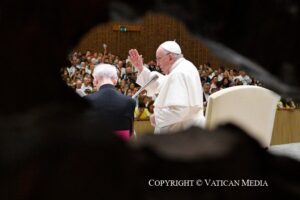 Thus encouraged, Juan Diego returned to the Bishop, who asked him for a sign. Our Lady promises Juan one, and comforts him with these words: “Let nothing frighten you, let nothing trouble your heart: […] Am I not here, I who am your mother?” This is beautiful. Often times when we are in desolation, in sadness, in difficulty, Our Lady say this to us, too, in our hearts: Am I, your mother, not here? [She is] always close by us to console us and give us the strength to go on.
Thus encouraged, Juan Diego returned to the Bishop, who asked him for a sign. Our Lady promises Juan one, and comforts him with these words: “Let nothing frighten you, let nothing trouble your heart: […] Am I not here, I who am your mother?” This is beautiful. Often times when we are in desolation, in sadness, in difficulty, Our Lady say this to us, too, in our hearts: Am I, your mother, not here? [She is] always close by us to console us and give us the strength to go on.
Then she asked him to go to the arid hilltop to pick flowers. It was winter, but, nevertheless, Juan Diego found some beautiful flowers, put them in his cloak and offered them to the Mother of God, who invited him to take them to the Bishop as proof. He goes, waits his turn patiently and finally, in the presence of the Bishop, opened his tilma – which is what the indigenous used to cover themselves – he opened his tilma to show the flowers—and behold! The image of Our Lady appeared in the fabric of the cloak, the extraordinary and living image that we are familiar with, in whose eyes the protagonists of that time are still imprinted. This is God’s surprise: when there is willingness and when there is obedience, He can accomplish something unexpected, in the time and in ways we cannot foresee. And so, the shrine requested by the Virgin was built, and even today one can visit it.
Juan Diego left everything and, with the Bishop’s permission, dedicated his life to the shrine. He welcomed pilgrims and evangelized them. This is what happens in Marian shrines, pilgrimage destinations, and places of proclamation, where everyone feels at home – because it is the house of their mamma, the house of their mother – and experiences nostalgia for home, that is, the longing for the place where you find the Mother, Heaven. Faith is welcomed in these places in a simple way, the faith is welcomed in a genuine way, in a popular way. And as she told Juan Diego, Our Lady listens to our cries and heals our sorrows (cf. ibid., 32). We should learn this: when there are difficulties in life, we go to our Mother; and when life is happy, we also go to our Mother to share these things. We need to go to these oases of consolation and mercy, where faith is expressed in a maternal language; where we lay down the labours of life in Our Lady’s arms and return to life with peace in our hearts, perhaps with the peace of little children.
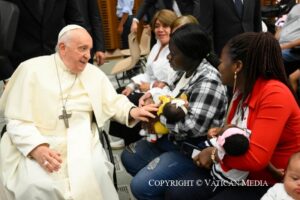
Special Greetings
I extend a warm welcome to the English-speaking pilgrims and visitors taking part in today’s Audience, especially the altar servers from Malta and the choir from Uganda. Upon you and your families, I invoke the joy and peace of our Lord Jesus Christ. God bless you all!
Summary of the Holy Father’s words
Dear brothers and sisters: In our continuing catechesis on apostolic zeal, we have been reflecting on the spread of the Gospel through the witness of men and women of every time and place. Today we consider the apparition of Our Lady of Guadalupe to Blessed Juan Diego, an event that contributed decisively to the evangelization of the Americas. By appearing to Juan Diego in native attire and speaking his language, the Blessed Virgin showed herself a Mother, the very Mother of God, and invited the indigenous peoples to take refuge beneath her mantle. The miracle of the roses that bloomed in mid-winter, and the appearance of Our Lady’s image on the fabric of Juan Diego’s cloak, speak eloquently of God’s preferential love for the poor and Mary’s maternal cooperation in the extension of his Kingdom. They also remind us of the important role of mothers and grandmothers in spreading the Gospel message, and, as in the case of Juan Diego, of our need as Christians for perseverance in the faith of our baptism. May the Mother of God, whose loving presence is felt in Guadalupe and in countless Marian shrines throughout the world, continue to draw hearts to Jesus her Son and to the saving truth of the Gospel.
Related
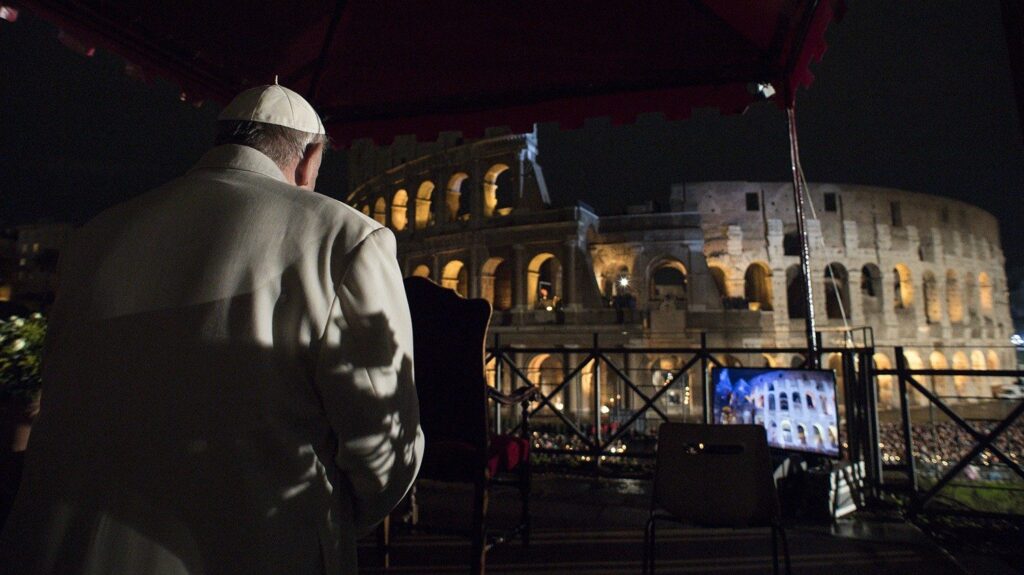
Stations of the Cross 2025: Pope Francis leads Good Friday prayer with his own meditations
Exaudi Staff
18 April, 2025
32 min
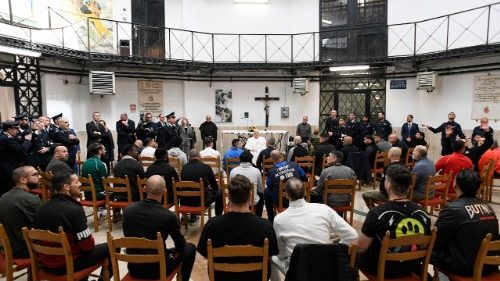
Pope Francis brings hope to prisoners: visit to Regina Caeli on Holy Thursday
Exaudi Staff
18 April, 2025
1 min

“Priests as Bearers of Hope”: Pope Francis’ Call at the Chrism Mass
Exaudi Staff
17 April, 2025
1 min
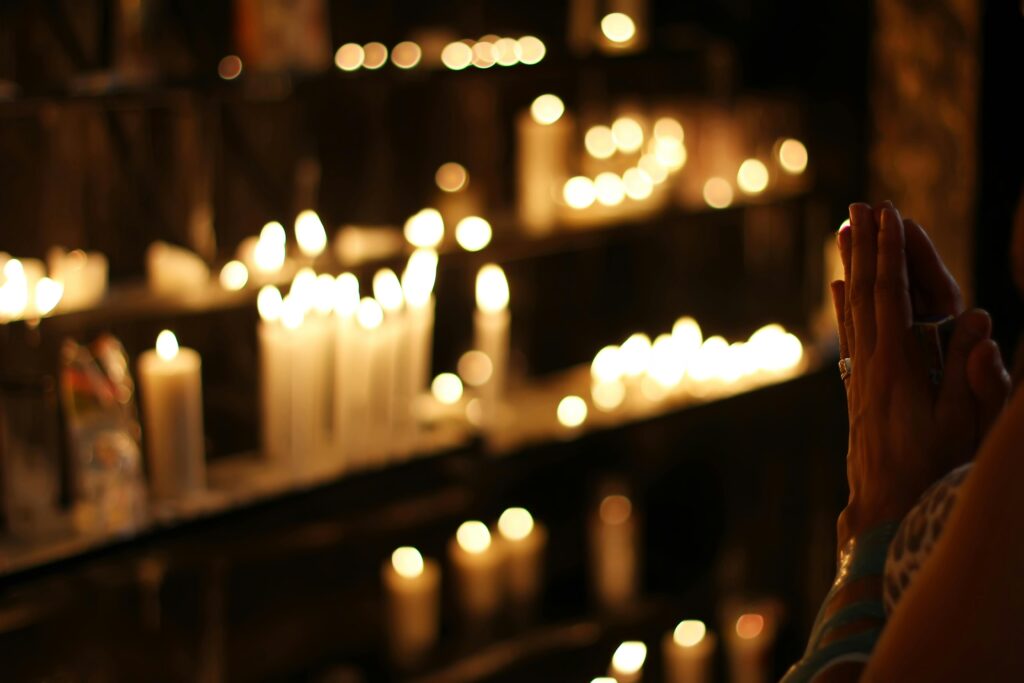
“Praying is an immense privilege”
José Miguel Ponce
17 April, 2025
3 min
 (EN)
(EN)
 (ES)
(ES)
 (IT)
(IT)

